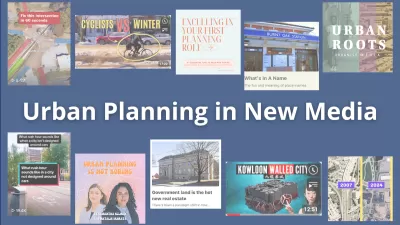A new report from the U.S. PIRG Education Fund looks at how innovations in technology and social networking are changing the country's transportation landscape, and contributing to the decline in driving.
Teleconferencing, e-commerce, transit apps, social media, and smartphones are among the emerging technologies having a profound impact on how, and how often, Americans travel (especially young ones). That's the conclusion of a new report out this week from Phineas Baxandall and his colleagues at the U.S. PIRG Education Fund.
But just how much of the an impact has technology had on the decline in vehicle travel? "It's virtually impossible to quantify the cumulative impact of all this technological change on the decline in driver's licenses or car registrations or miles traveled (is 'new technology' responsible for 15 percent of the drop? 30 percent?)," says Emily Badger. "Baxandall reasons, though, that 'it’s definitely a significant piece of what’s behind the driving trends. But if you look to the future, it seems even more significant. All of these things are really just in their infancy.'"
But on the related question of how lasting the accompanying urban revival will be, the report includes some interesting findings. "Notably, only 27 percent of child-less Millennials said they picture themselves residing long-term in an urban setting, a decision that dictates many of the transportation modes available to them (there's no point in using a transit app if you live nowhere near transit)," notes Badger. "And so this is reason for caution in tracing these trends out into the future."
FULL STORY: What the Rise of Technology Has to Do With the Decline of Driving

Study: Maui’s Plan to Convert Vacation Rentals to Long-Term Housing Could Cause Nearly $1 Billion Economic Loss
The plan would reduce visitor accommodation by 25,% resulting in 1,900 jobs lost.

North Texas Transit Leaders Tout Benefits of TOD for Growing Region
At a summit focused on transit-oriented development, policymakers discussed how North Texas’ expanded light rail system can serve as a tool for economic growth.

Using Old Oil and Gas Wells for Green Energy Storage
Penn State researchers have found that repurposing abandoned oil and gas wells for geothermal-assisted compressed-air energy storage can boost efficiency, reduce environmental risks, and support clean energy and job transitions.

Santa Barbara Could Build Housing on County Land
County supervisors moved forward a proposal to build workforce housing on two county-owned parcels.

San Mateo Formally Opposes Freeway Project
The city council will send a letter to Caltrans urging the agency to reconsider a plan to expand the 101 through the city of San Mateo.

A Bronx Community Fights to Have its Voice Heard
After organizing and giving input for decades, the community around the Kingsbridge Armory might actually see it redeveloped — and they want to continue to have a say in how it goes.
Urban Design for Planners 1: Software Tools
This six-course series explores essential urban design concepts using open source software and equips planners with the tools they need to participate fully in the urban design process.
Planning for Universal Design
Learn the tools for implementing Universal Design in planning regulations.
Ascent Environmental
Borough of Carlisle
Caltrans
Institute for Housing and Urban Development Studies (IHS)
City of Grandview
Harvard GSD Executive Education
Toledo-Lucas County Plan Commissions
Salt Lake City
NYU Wagner Graduate School of Public Service




























